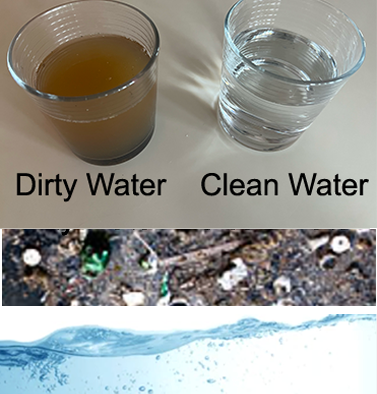Today, our world is at a critical juncture, urgently needing reimagining. It is the time to rethink and to reimagine. On the one hand, more people worldwide are living a comfortable lifestyle than ever before. But we now acknowledge human and natural imbalance issues that need immediate recalibrating. Look at OXFAM’s Safe and Just Donut to discover breaches in the Earth’s atmosphere and the continued need for fresh water, secure food sources, clean air, and stewardship, conservation, and replanting of natural landscapes for non-human life to live and for humans to be able to prosper. Explore our food chain to realize that humans are at the top and that we need nature’s support in regenerating topsoil and nutrients to keep the food chain healthy across cultures, continents, and oceans. UNESCO’s Sustainable Development goals share concerns about people, place, and potential for change. The E.O. Wilson Half Earth Foundation asks humans to preserve half of the Earth for nature and non-human life. OXFAM published a Safe Space for Humanity to extend a series of rights to all peoples while responding to the environment’s needs as well. Think about what you need to live and what others need on other sides of the globe. Think about people, and Nature, and the Earth.
How can we contribute?
Activity 1 – Clean Air

Clean air is essential for human health, biodiversity, and climate stability. Yet, according to the World Health Organization (WHO), 99 % of the global population breathes air that exceeds pollution limits, leading to respiratory diseases, heart conditions, and premature deaths. Significant sources of air pollution include industrial emissions, vehicle exhaust, deforestation, and agricultural activities. Solutions such as stricter air quality regulations, transitioning to electric vehicles, investing in renewable energy, and planting urban forests can drastically improve air quality. Countries like Sweden and Canada have successfully reduced air pollution through policies promoting clean energy and green public transportation. On an individual level, reducing energy consumption, using public transit or bicycles, and supporting policies that limit industrial emissions can contribute to cleaner air. Review this Real Time Global Air Quality map to find out the air quality where you live.
How can we collectively reduce air pollution in our cities and communities?
Activity 2 – Clean Water

According to the United Nations, access to clean water is a fundamental human right, yet over 2.2 billion people lack safe drinking water. Water pollution from industrial waste, agricultural runoff, and plastic contamination seriously threatens human health and aquatic ecosystems. Approximately 8 million tons of plastic annually enter the oceans, harming marine life and polluting drinking water supplies. Sustainable water management practices, such as wastewater treatment, rainwater harvesting, and responsible agricultural irrigation, are critical to protecting this vital resource. Countries like Singapore have pioneered water recycling and desalination technologies to ensure water security. Simple actions like reducing plastic waste, fixing household leaks, and using water-efficient appliances can make a significant difference. Underground Aquifers are also disappearing.
How can communities work together to protect freshwater sources and ensure clean water access for all?
Activity 3 – Affordable and Clean Energy
Energy is the engine of modern society, yet 733 million people still lack access to electricity, according to the International Energy Agency (IEA). While fossil fuels, coal, oil, and natural gas have powered industrial growth, they contribute to 75% of global greenhouse gas emissions, exacerbating climate change. Transitioning to renewable energy sources like solar, wind, and hydropower can reduce environmental damage while ensuring sustainable energy access. Denmark has successfully integrated wind power, generating nearly 50% of its electricity from wind turbines. Innovations such as solar microgrids provide clean energy to remote villages in Africa and Asia. Governments must implement policies that incentivize clean energy adoption.
How can we, as individuals, contribute to achieving clean energy?
Activity 4 – Quality Education
Education is a powerful tool for breaking the cycles of poverty and driving sustainable development. However, according to UNESCO, 244 million children and adolescents are out of school worldwide. Quality education fosters critical thinking, innovation, and awareness of global challenges such as climate change and inequality. Nations like Finland and Japan have demonstrated that investing in education through well-trained teachers, inclusive policies, and modernized curricula leads to stronger economies and healthier societies. Digital learning platforms, open educational resources, and community-based learning schools are expanding access to education, especially in underserved regions. To ensure inclusive and equitable education for all, governments must invest in infrastructure, scholarships, and teacher training, while individuals mentor students, share educational platforms that connect Nature and the built environment.
How can education be made more accessible and relevant to future sustainability challenges?
Activity 5 – Good Health and Well-Being
A healthy population is fundamental to sustainable development, yet millions worldwide suffer from preventable diseases due to inadequate healthcare, poor nutrition, and environmental hazards. According to WHO, air pollution alone causes 7 million premature deaths annually, while malnutrition affects 1 in 3 people globally. Access to healthcare, nutritious food, clean water, and mental health support are essential for well-being. Countries with universal healthcare systems, like Norway and Japan, demonstrate that investing in public health leads to longer life expectancy and economic stability. Public policies that regulate pollution promote active lifestyles and ensure food security, contributing to healthier societies. On an individual level, we can do a lot; maintaining a balanced diet, engaging in physical activity, and reducing exposure to harmful chemicals can improve personal and community well-being . How can we create environments that promote lifelong health for everyone?
Activity 6 – Life Below Water
Oceans regulate the Earth’s climate, provide food for billions, and support vast biodiversity, yet human activities push marine ecosystems to the brink. Overfishing has led to the depletion of nearly 90% of global fish stocks, while pollution and climate change threaten coral reefs, which support 25% of marine species. Plastic waste is a significant issue, with microplastics now found in seafood consumed by humans. Solutions include establishing marine protected areas, promoting sustainable fishing practices, reducing plastic waste, and restoring damaged ecosystems. Countries like Palau have created large marine reserves to protect biodiversity.
How can we balance human needs with ocean conservation to ensure a thriving marine environment?
Activity 7 – Life on Land
Forests, wetlands, and grasslands provide oxygen, absorb carbon dioxide, and sustain countless species, yet deforestation and habitat destruction continue at alarming rates. The Amazon rainforest, often called the “lungs of the Earth,” loses large areas daily due to logging, agriculture, and mining. Deforestation contributes to climate change and endangers wildlife that depend on forests. Conservation efforts like reforestation projects, protected areas, and sustainable land-use policies help restore ecosystems. Countries like Costa Rica have reversed deforestation trends through reforestation programs.
As individuals, to preserve and restore natural habitats in our cities, we can plant trees and reduce paper waste. What can we do more?
Activity 8 – Life in Cities
According to The World Bank, By 2050, nearly 70% of the global population will live in cities, making urban sustainability a critical challenge. Unplanned urban growth leads to pollution, traffic congestion, and inadequate housing. Sustainable cities incorporate green infrastructure, efficient public transport, renewable energy, and waste management systems to improve residents’ quality of life—many cities invest in bike-friendly streets, integrated vertical gardens, and green rooftops. Smart city technologies, such as energy-efficient buildings and water recycling, help reduce environmental impact. Urban planners, policymakers, and citizens must collaborate to make cities more resilient and inclusive.
What changes can we make in our cities to enhance sustainability and livability?
Activity 9 – Climate Action
Climate change is already affecting weather patterns, food security, and biodiversity, with global temperatures rising by 1.1°C since pre-industrial times. If emissions continue at current rates, we could exceed 1.5°C warming within the next decade, leading to more extreme weather events, rising sea levels, and habitat loss. Reducing greenhouse gas emissions through renewable energy, reforestation, and sustainable agriculture is crucial. Countries like Germany have committed to phasing out coal power, while cities worldwide are investing in climate resilience infrastructure.
How can we work together as a community to combat climate change and build a more resilient future?
Review
- Which of the following are significant sources of air pollution?
- How many tons of plastic enter the oceans annually, harming marine life and polluting drinking water supplies?
- According to the International Energy Agency (IEA), how many people still lack access to electricity?
- According to UNESCO, how many children and adolescents are out of school worldwide?
- How many premature deaths annually are caused by air pollution, according to WHO?
- What is a major consequence of plastic waste in the oceans?
- What is the Amazon rainforest often called due to its role in absorbing carbon dioxide and providing oxygen?
- Which of the following is a sustainable urban practice mentioned in the text?
- Since pre-industrial times, by how much have global temperatures risen?
Explore
Relate
- Acid Rain
- Air
- Air Quality
- Animals
- Biodiversity
- Biomes
- Birds
- Blue/Green Cities
- Carbon Cycle
- Circular Economy
- Cities
- Climate
- Coral Reefs
- Earth
- Earth Energy Balance
- Ecosystems
- Energy
- Fish
- Food
- Grass
- GREEN Energies
- Greenways
- Growing food
- Health
- Imagination
- Insects
- Land
- LAND USE
- Nature
- Oceans
- People
- Plants
- Rivers
- Rocks
- SEEDS
- Soil
- Solar Energy
- Temperature
- Tree Identification
- Water
- Watershed
- Well Being
- Wetlands


















































